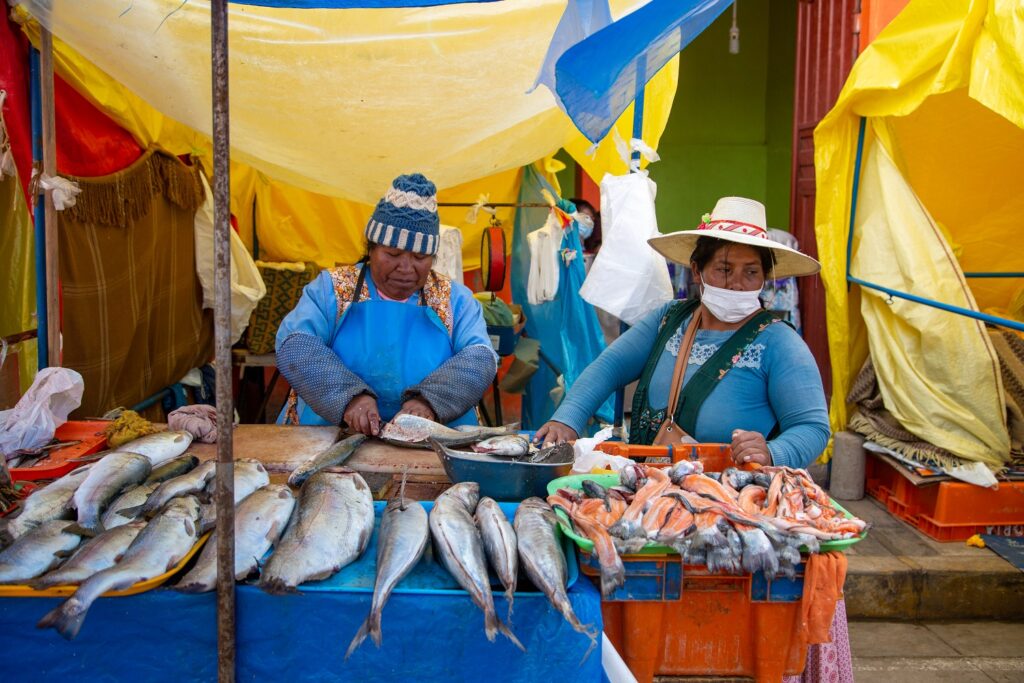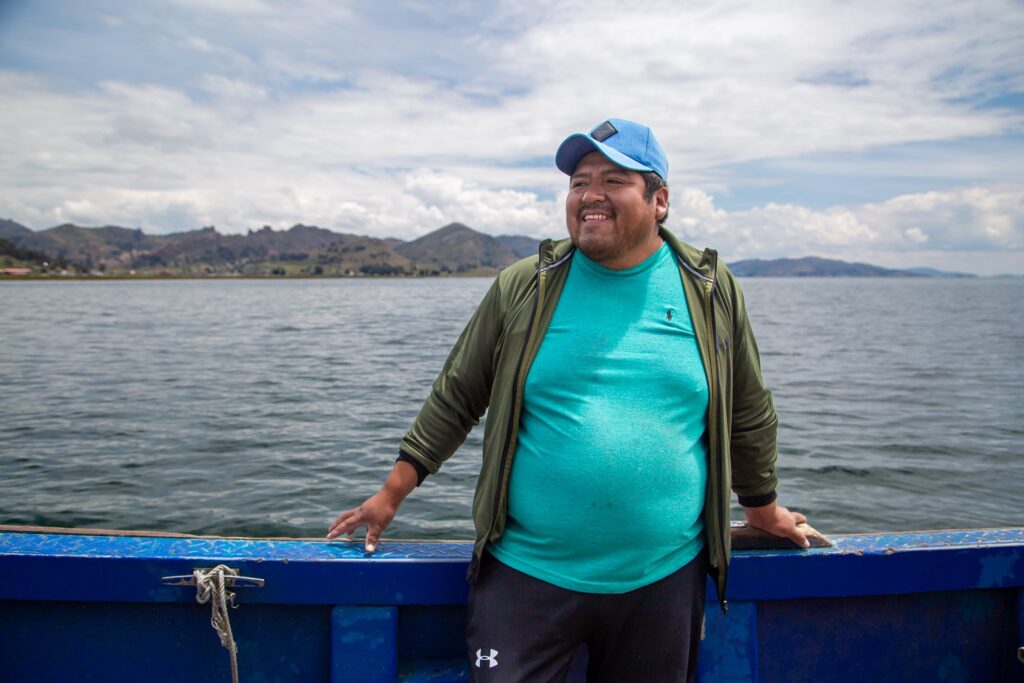Juan Cruz Aruquipa is a Peruvian entrepreneur of Aymara origin. The Aymaras have been dwelling on Lake Titicaca’s andean plateau since pre-columbian times. He and his wife, Graciela Velázquez own a small-scale trouch farm in the highest navigable lake in the world, at 3,812 meters above seal-level.
“This is my business”, shares Juan, proud of what he has achieved. “Since I was a kid I’ve always worked on this and now I do it with the help of my partner which motivates me more.”
Graciela sells the fish at the local market. Between the two of them, and with the support of Financiera Confianza, they were able to make the business grow during these past years. The local institution of the BBVA Microfinance Foundation (BBVAMF). Now they are able to hire nine workers as well as the services of Daniel Torres, an agronomist engineer who helps them improve the activities regarding the production process while at the same time protecting the environment. For instance, Daniel advices them on the amount of feeding per cage so as not to contaminate the lake.

Juan and Graciela are from Chucuito, located at the department of Puno at almost 4,000 meters high and near the area declared by the government as the Lake Titicaca National Reserve. An appointment that aims to help protect this extraordinary basin of natural resources. This region harbors an enormous potential of water resources (354 lakes, 316 rivers and 7 dams), among which Lake Titicaca is the most important in terms of aquaculture.
We should all take care of Lake Titicaca, says Juan Cruz Aruquipa
Juan knows that protecting and preserving its biodiversity is essential for the lake’s future and for that of the people living in the area. “I would recommend all of those who make a living out of Lake Titicaca to take care of it. Perhaps our children will carry on with the family business and we have to preserve it”, he says as he sits on his boat contemplating the horizon. It’s been decades since the cultural richness as well as its abundant flora and fauna have been impacted by climate change and water pollution, weakening the ecosystem.

Making peace with nature
This is only one of the examples of a natural habitat that we have to preserve to “make peace with nature, securing its health and building on the critical and undervalued benefits that it provides are key to a prosperous and sustainable future for all”, according to UN secretary general, Antonio Guterres, in the 2021 PNUMA report “Making Peace With Nature: A scientific blueprint to tackle the climate, biodiversity and pollution emergencies”, a roadmap for us to follow to get to a sustainable future with new possibilities and opportunities.
That is why every 22nd of April, International Mother Earth Day is celebrated. An event where United Nations warns about the conditions of these natural habitats due to effects of “climate change, man-made changes to nature as well as deforestation, land-use change, intensified agriculture and livestock production or the growing illegal wildlife trade” and pushes for change towards a more sustainable economy that functions for the people and for the planet.
For entrepreneurs like Juan and Graciela, who, with their business, work hard for their children’s well-being, “so that they could be somebody in life” to promote sustainable aquaculture means maintaining the balance between what this lake has to offer and the preservation of this special place.

